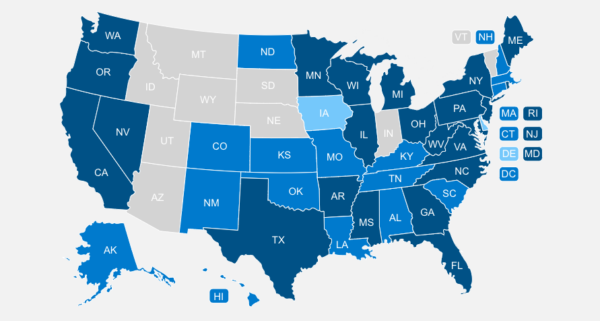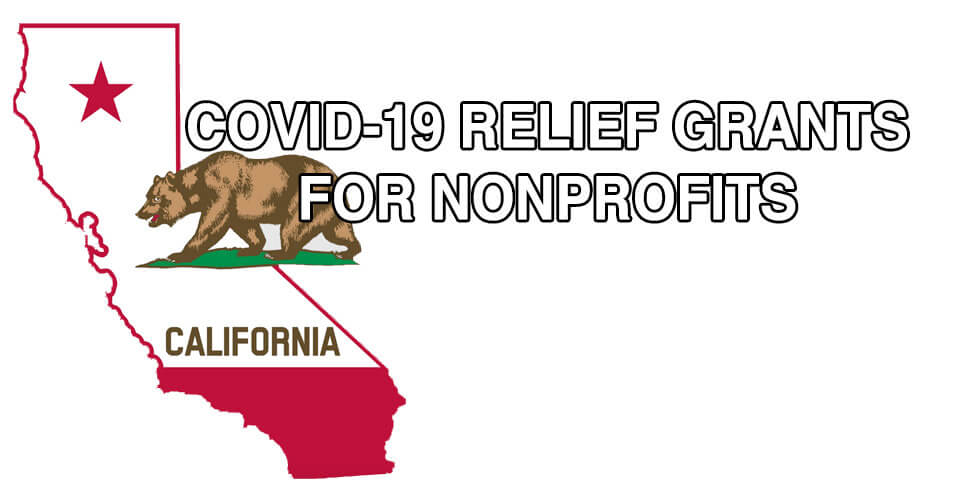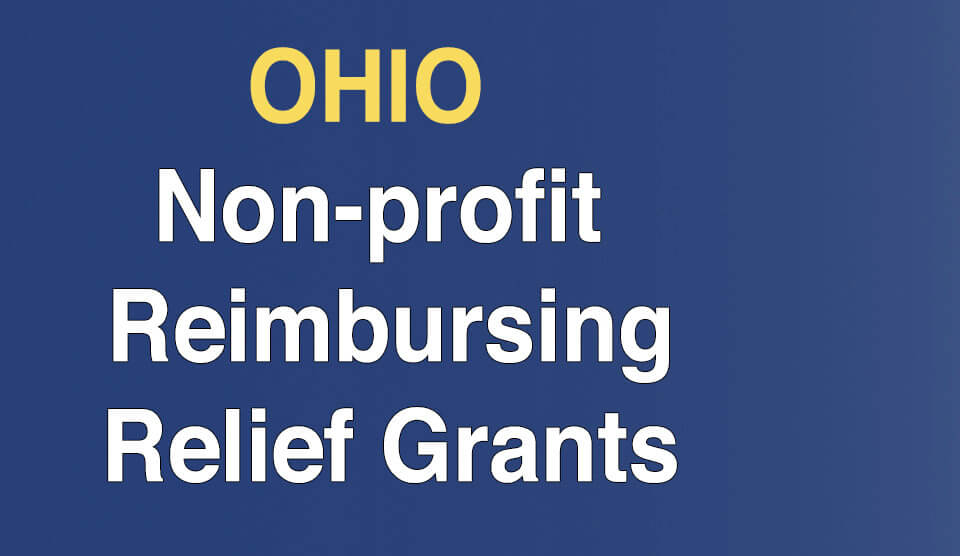
Filing Deadline Extension for NY CHAR500 Due to Hurricane Impact
January 7, 2025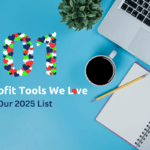
The Top 101 Nonprofit Resources and Tools for Success
January 27, 2025How to Get Google Ad Grants for Nonprofits: Step-by-Step Guide ($10K/Month)
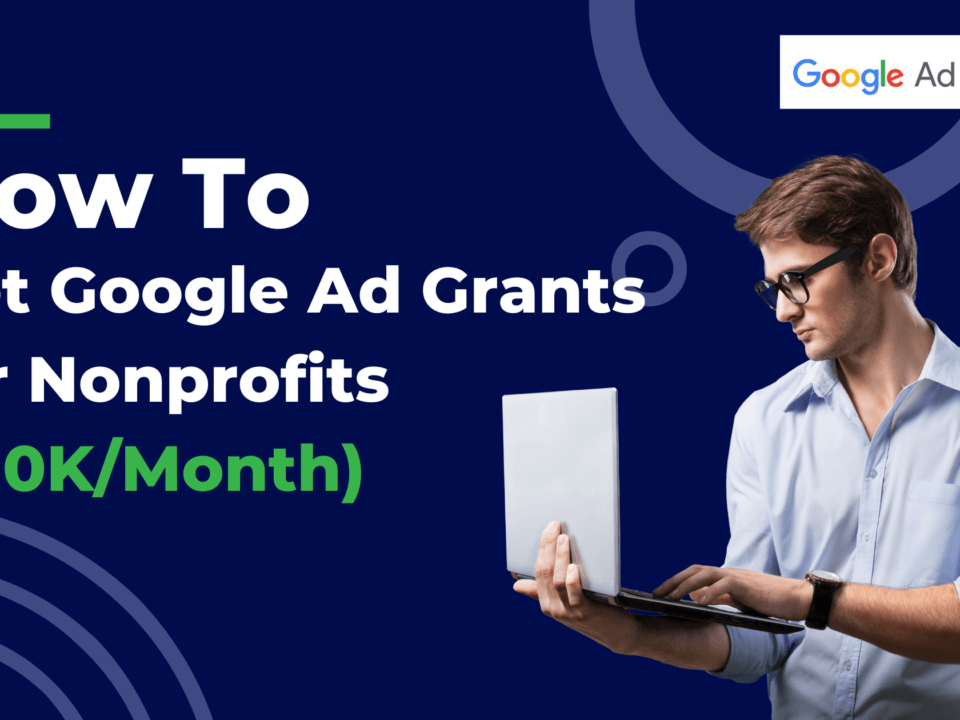
Google has awarded more than $10 billion in free advertising to over 115,000 nonprofits across 51 countries since 2003. That’s quite remarkable!
The Google Ad Grants for nonprofits program gives eligible organizations $10,000 in monthly ad credits to boost their online presence. Qualified nonprofits can receive up to $10,000 worth of ads each month to share their mission, recruit volunteers, and drive donations.
Many nonprofits miss this chance because they struggle with getting started or staying compliant. The program needs at least two campaigns with multiple ad groups, and organizations must keep a 5% click-through rate to remain eligible.
Want to use this powerful advertising resource for your nonprofit? This piece will guide you through everything about qualifying, applying, and managing your Google Ad Grant successfully. If you would like to talk with a Google Ad Grants specialist, you can email info@grantrepublic.com.
What is Google Ad Grants: Understanding the $10K/Month Program
Google Ad Grants enable nonprofits to advertise on Google.com through search advertising. Qualified organizations can receive up to $10,000 in monthly search ad credits to promote their causes [1].
How Google Ad Grants work for nonprofits
The program runs on a daily budget of $329, adding to the monthly $10,000 limit. Organizations need to distribute this budget across multiple campaigns based on their priorities. The program sets a maximum cost-per-click bid of $2.00 for keywords. [2]
Benefits and limitations of the program
Nonprofits can gain several advantages from this program:
- Website traffic grows with improved visibility
- Events and fundraising campaigns get more exposure
- More volunteers and potential donors join the cause
- Analytics provide detailed campaign insights
- Keywords and ad positions stay under your control
Notwithstanding that, some limitations apply to the program. Organizations must keep a minimum 5% click-through rate each month [1]. More restrictions include a ban on single-word keywords and requiring at least two campaigns with multiple ad groups [3]. Text ads are the only option available, which means image or video ads won’t work [3].
Success stories and examples
The program has helped many organizations achieve soaring wins:
- DonorsChoose.org generated over 5,000 donations for public schools. They received an average donation of $212 to support women worldwide [4].
- We Care Animal Rescue saw their monthly adoption applications jump by 125% [4].
- The Federation of Canadian Artists brought 70,000 new visitors to their exhibitions [4].
- Samaritans collected over $48,000 in online donations for their helpline [4].
- SOS Children’s Villages of India boosted website traffic by over 30% [4].
Google Ad Grants Eligibility Requirements
Getting a Google Ad Grant requires meeting specific eligibility criteria. First, organizations must have valid charitable status in their respective countries. U.S.-based organizations need current 501(c)(3) status.
Nonprofit organization criteria
Your organization must register with Google for Nonprofits to qualify for the program [3]. These types of organizations cannot qualify:
- Government entities and organizations
- Hospitals and healthcare organizations
- Schools, academic institutions, and universities [5]
Philanthropic arms of educational institutions can still qualify for the program [1]. Religious institutions and churches qualify after they get 501(c)(3) status from the IRS [6].
Website and technical requirements
Your website plays a vital part in determining eligibility. Google has several technical requirements:
- Your organization must own the domain where users land after clicking your ads [5].
- The website needs SSL certification, shown by a lock icon in the browser’s navigation bar [1].
- Your site should have substantial content about your mission and activities [5].
Your website must meet these quality standards:
- Updated events and information
- Clear calls to action
- Quick loading times
- No broken links [5]
Commercial activities on your website should be limited and support your mission directly. You must clearly explain how these activities help achieve your organizational goals [5].
Common eligibility roadblocks
Organizations face several challenges during verification. Staying compliant requires attention to specific details. Your account must reach a minimum 5% click-through rate. If you don’t meet this measure for two consecutive months, your account might face temporary deactivation [7].
Valid conversion tracking is another significant requirement. You must report at least one conversion each month through Google Analytics or direct conversion tracking [6]. Your conversion tracking must be accurate – total clicks should not nearly match your total conversions [6].
Your Google Ad Grants account needs active participation to stay eligible. This means regular campaign management and following Google’s advertising policies. You must run at least two campaigns with multiple ad groups [9].
Step-by-Step Application Process
The Google Ad Grants application needs a well-laid-out process that starts with building your nonprofit’s presence in the digital world. These steps will make your application smoother.
Setting up Google for Nonprofits account
Your first task is to register with Google for Nonprofits. You should verify your organization through TechSoup or your country’s verification partner before starting the application [10].
Here’s what you need to do:
- Sign in with your organization’s administrative email
- Submit your nonprofit’s registration number (EIN for US organizations)
- Provide organization details, including physical address and mission statement
- Complete contact information with your name, title, and phone number [11]
Goodstack (formerly Percent) will review your application during the verification process and might need more documents to confirm your organization’s status [2].
Completing the Ad Grants application
You can move forward with the Ad Grants application once your Google for Nonprofits account gets approved. The process needs several technical checks:
Your website must pass a security check first. Google requires your site to use HTTPS protocol and meet their website policies [3]. You’ll then need to watch the required welcome video that explains program requirements and success strategies.
After watching the video, you must:
- Confirm video completion by checking the designated box
- Submit your website to review
- Accept the program terms and conditions [3]
Important: Make sure to use the same email address for both your Google for Nonprofits and Ad Grants accounts [12]. After activation, you can add more users to manage your account.
Timeline and approval process
The application moves through several stages that take different amounts of time:
- Google for Nonprofits review: 2-14 business days [14]
- Ad Grants activation review: 3 business days [3]
You’ll get two separate email invitations after approval:
- Access to your new Google Ads account
- Google Payments billing profile setup (no payment required) [11]
Quick responses to verification partners and their requests for more information help speed things up. Most delays happen because websites don’t meet compliance standards or documentation is incomplete [13]. Your website should meet all technical requirements before you start the application process.
Setting Up Your Google Ads Account
A successful Google Ad Grants management starts with the right account structure. Your $10,000 monthly advertising budget works better with a well-laid-out account that stays compliant with program requirements.
Account structure best practices
Your Google Ad Grants account needs multiple organization levels. It must have at least two ad groups per campaign and a minimum of two ads per ad group [1]. This structure allows for shared budget allocation and performance tracking.
Your campaigns work best when structured around broad goals such as:
- Fundraising initiatives
- Volunteer recruitment
- Program awareness
- Event promotion
Each campaign should feature themed ad groups that focus on related keywords that align with your landing pages [1]. This approach will give a higher quality score than required and keeps ads relevant to what people search for.
Original campaign setup
Your first campaign needs several key steps:
- Name your campaign based on its main goal
- Select specific geographic targeting to reach relevant audiences
- Set daily budget to $329 or less (monthly limit divided by days)
- Choose conversion-focused bidding strategies
- Add a minimum of two sitelink extensions
- Configure language settings [15]
Your campaign settings should match your nonprofit’s service area. A local community service should target ads to specific regions, while national organizations can create different campaigns for various geographic areas [15].
Keyword research and selection
The right keywords determine your campaign’s success. Google Keyword Planner helps you research search volumes and keyword competition [16]. Focus on multi-word phrases that connect directly to your nonprofit’s mission and services.
These strategies help with keyword research:
- Use Google Trends to spot seasonal patterns
- Analyze search terms driving organic traffic
- Implement negative keywords to stop irrelevant clicks [17]
Single-word keywords don’t work unless approved exceptions like medical conditions or your organization’s name [18]. Target longer, specific phrases that show clear user intent instead. “Donate to ocean conservation” or “volunteer opportunities near me” work better than just “donations” [16].
Your keywords need a quality score above 3 [16]. This score shows how well your keywords, ad copy, and landing pages work together. Monitor your keywords to stay compliant with Google’s requirements [17].
Creating High-Converting Ad Campaigns
Google Ad Grants campaigns thrive on compelling ad content and optimized landing pages. You need attention to detail and constantly refining your advertising strategy to create high-performing campaigns.
Writing effective ad copy
Your ad copy should reflect your website’s content with clear calls to action [19]. Show value to users without being pushy – this matters most [20]. Here’s what you should do while crafting ads:
- Match headlines and descriptions with your most successful keywords
- Include specific benefits rather than generic sales language
- Create urgency through meaningful time-sensitive offers
- Build trust by mentioning the “official site” status
Your ad copy must follow Google’s trademark and punctuation policies [19]. Each ad group needs at least two ads [21]. This lets Google display the better-performing versions automatically.
Landing page optimization
Landing pages are the foundations of your campaign’s success. The pages should load fast and match your ad’s promise with relevant content [22]. Here are the essential optimization elements:
- Place important information at the top of the page
- Ensure mobile-friendly design and navigation
- Embed conversion forms directly on the page
- Maintain SSL certification and security standards
- Include clear, prominent calls-to-action
Your landing pages need keywords from your ads that match search terms [21]. This match helps boost quality scores and keeps your program compliant.
A/B testing strategies
A/B testing is a vital tool to improve campaign performance. Test small changes in headlines or call-to-action language first. Then, move to larger elements [23]. Your testing strategy should target:
Ad Copy Testing Create different versions of your ads with varied headlines and descriptions. Google automatically shows the better-performing versions more often [23]. Click-through rates help identify messages that strike a chord with your audience.
Landing Page Testing Watch bounce rates and conversion metrics to review landing page effectiveness. Your pages should achieve conversion rates between 2-12%. Program requirements cap the maximum at 15% [24]. Test these elements:
- Page layouts and design
- Call-to-action placement
- Content structure
- Form designs
Google Analytics provides immediate data to measure success. Look at metrics like click-through rates, conversion rates, and quality scores [17]. This information shows which combinations of ad copy and landing pages work best for your nonprofit’s goals.
Managing Your Google Ad Grant Budget
Budget management is the key to getting the most from your Google Ad Grants. You need to know how the program’s budget works to achieve better advertising results.
Daily and monthly budget allocation
The program gives $10,000 in monthly advertising credits, which breaks down to $329 daily [25]. You can’t roll over the daily budget – any unused amount expires at midnight [26]. You need careful planning to split this budget between multiple campaigns.
Your campaigns will work better if you set their budgets above the daily limit. The best practice is to set each campaign’s budget to $329. This lets Google’s system put money into well-performing campaigns [27]. Your campaigns stay visible this way while the account stays within spending limits.
Bid management strategies
You can discover the full potential of your ad grant with Smart Bidding strategies. Manual bidding stops at $2.00 per click, but automated strategies based on conversions can go higher [6]. Here are the advanced options:
- Maximize Conversions: Automatically optimizes bids to generate the most conversions within the budget
- Target CPA (Cost Per Action): Sets specific cost targets for desired actions
- Target ROAS (Return on Ad Spend): Focuses on value-based conversion goals
These strategies use machine learning to study past performance and change bids as needed [28]. The results are impressive – some accounts get average CPCs of $8.56, and single clicks can reach $56.36 [6].
Cost-per-click optimization
Quality Score affects your cost-per-click rates directly. Better scores mean lower costs and higher ad positions [26]. Here’s how to optimize your CPC:
- Keep keywords relevant to ad content
- Make sure landing pages match what users want
- Track and improve click-through rates
- Remove keywords that don’t perform well
Conversion tracking opens up advanced bidding options, helping you go beyond the standard $2.00 bid cap [29]. Regular checks of your performance show where to move the budget between campaigns.
Successful accounts use automated bidding to maximize their daily budget. Some organizations use their full budget within days of starting, while others take time to build momentum [30]. The secret is to keep optimizing and put your budget into campaigns that work best.
Maintaining Compliance and Avoiding Suspension
Google Ad Grants policies need constant attention to detail and monitoring. Your nonprofit’s access to this valuable advertising resource depends on following the program guidelines.
Monthly account requirements
A 5% click-through rate (CTR) is the main monthly requirement for Google Ad Grants accounts. Your account faces temporary deactivation if you miss this standard for two months in a row [1].
Your account should show real user interest through:
- At least one conversion per month through Google Analytics or direct tracking [31]
- Two or more ad groups per campaign with relevant keywords [1]
- Minimum of two sitelink extensions [1]
- Regular updates every 90 days [32]
Conversion tracking is the life-blood of program compliance. You need to track meaningful actions like donations, volunteer sign-ups, or newsletter subscriptions to show your ads work [33].
Performance monitoring
We focus on three key metrics to monitor performance:
Click-Through Rate (CTR): Keep an eye on your account-level CTR. When rates start dropping, act quickly:
- Review data from the last seven active days
- Find keywords that aren’t performing well
- Make your ad copy and landing pages better
- Remove keywords scoring below 3 [1]
Conversion Tracking: Check conversion accuracy in Google Analytics. High conversion rates need a closer look to confirm proper setup [1]. Focus on meaningful conversions that line up with your organization’s goals.
Quality Scores: Your keywords must score above 2 to stay active [32]. You can improve your campaigns by:
- Making keywords more relevant
- Creating better landing pages
- Keeping ad copy consistent
Policy violation prevention
Knowledge of common compliance issues helps avoid account suspension. Google might suspend accounts without warning for policy violations [34].
Critical Areas for Compliance:
- Website Requirements:
- Keep SSL certification current
- Own the domain getting ad traffic
- Update content regularly [35]
- Commercial Activity:
- Keep commercial elements minimal
- Make sure activities support your mission
- Don’t overuse external links [35]
- Geographic Targeting:
- Choose appropriate locations
- Match your service areas [8]
Check your account against program policies often to stay compliant. Prevention works better than fixing problems after suspension. If suspension happens, fix violations quickly and ask for reinstatement through Google’s official channels [36].
Regular checks and following policies will help you keep your Google Ad Grant active. Note that you must complete the annual program survey [32], a requirement many organizations forget despite its importance for staying eligible.
Measuring Success and ROI
Your Google Ad Grants performance tracking reveals the actual value of your advertising efforts. The right metrics and tracking systems are the foundations of successful campaigns.
Key performance indicators
Specific metrics help you review your Google Ad Grants effectiveness. These primary indicators need monitoring:
Click-Through Rate (CTR): Your ads must maintain a minimum 5% CTR monthly [37]. This metric shows how your ads appeal to your target audience.
Conversion Rate: The range sits between 2-12%, and program requirements cap the maximum at 15% [38]. This rate shows how your ads lead to meaningful actions.
Quality Score: Keywords must score above 3 to stay active [37]. This metric combines:
- Ad relevance to search terms
- Landing page experience
- Expected CTR
Cost Per Conversion: This metric determines the investment needed for each meaningful action. The Google Ad Grant costs nothing, but management fees range from $400 to over $1,000 monthly [37].
Conversion tracking setup
Accurate conversion tracking is vital for program compliance. Google Analytics stands out as the best tool to track user behavior after ad interactions [38]. Here’s how to set up conversion tracking:
- Link your Google Ads account with Google Analytics
- Define meaningful conversion goals:
- Monetary actions: donations, ticket sales, memberships
- Non-monetary actions: volunteer sign-ups, email subscriptions
- Import Analytics goals into your Google Ads account
- Configure conversion values for each action
Smart Goals in Google Analytics use machine learning to spot your most valuable sessions [5]. This option works best when standard conversion tracking becomes difficult.
Monetary conversions need eCommerce tracking to monitor specific transaction values [7]. This setup tracks:
- One-time donations
- Monthly recurring gifts
- Event ticket purchases
- Membership fees
Reporting and analytics
Better reporting leads to an optimized advertising strategy. Google Analytics offers detailed insights into:
Campaign Performance: You can see which ads create the most engagement and conversions [39]. This data shows:
- Best-performing keywords
- Most effective ad copy
- Highest-converting landing pages
User Behavior: You’ll learn how visitors use your site after clicking ads [37]. Key metrics include:
- Pages per session
- Average session duration
- Bounce rates
- Conversion paths
Geographic Impact: Performance analysis across locations helps optimize targeting [40]. This information lets you:
- Adjust budget allocation
- Refine targeting strategies
- Identify high-performing regions
Let campaigns run for at least a week before analyzing performance [41]. Set up regular monitoring schedules:
Weekly Reviews:
- Check CTR performance
- Monitor conversion rates
- Adjust underperforming elements
Monthly Analysis:
- Review budget use
- Check conversion trends
- Assess ROI metrics
ROI calculations differ among organizations based on their goals [38]. Monetary conversions compare management costs against generated revenue. Non-monetary goals need values assigned to actions like volunteer sign-ups or email subscriptions.
Professional management often produces better results and helps organizations handle tracking and optimization challenges [38]. Working with Google Partners speeds up performance improvements and ensures correct tracking setup.
Conclusion
Google Ad Grants is a powerful tool that gives nonprofits $10,000 monthly to magnify their digital presence and affect their mission. The program’s success depends on meeting eligibility requirements, maintaining compliance, and implementing effective campaign strategies.
A proper account setup marks the beginning of your experience with strategic campaign management. You must monitor key metrics like click-through rates, conversion tracking, and quality scores to ensure program compliance and maximize results.
Google Grant Ads can be a great tool for fundraising and bringing in donors, but it also can be used in several other ways. For instance, it can be used to educate the public about a topic such as an issue or a disease. It can also be used to recruit donors and other supporters to the organization. Some organizations have also used it to increase name recognition or to make people aware of a specific resource, such as a church. It can also be used for a combination of goals, and having multiple Google Ad Campaigns is likely a good idea for nonprofits with Google Ad Grants or who use Google Ads. Regardless of how you intend to use these free ads, consider Grant Republic for expert guidance.
Note that Google Ad Grants management needs dedication and attention to detail. The guidelines outlined in this piece will help your nonprofit employ this valuable resource to boost visibility and achieve meaningful results through targeted advertising.
References
[1] – https://support.google.com/grants/answer/9042207?hl=en
[2] – https://help.tithe.ly/hc/en-us/articles/7302817653783-Setting-up-Google-Workspace-for-Nonprofit-Using-Your-Domain
[3] – https://support.google.com/grants/answer/6077350?hl=en
[4] – https://www.google.com/grants/
[5] – https://support.google.com/grants/answer/9841491?hl=en
[6] – https://digitaltabby.com/max-cpc-data-google-ad-grant/
[7] – https://support.google.com/grants/answer/9085439?hl=en
[8] – https://www.google.com/grants/faq/
[9] – https://recharity.ca/google-ad-grant-mistakes/
[10] – https://www.google.com/nonprofits/eligibility/
[11] – https://intellitonic.com/blog/google-for-nonprofits-setting-up-google-ad-grants/
[12] – https://support.google.com/grants/answer/6077350?hl=en-gb
[13] – https://support.google.com/grants/thread/28019266/how-long-does-the-google-ad-grants-application-process-take?hl=en
[14] – https://gettingattention.org/how-to-apply-for-google-grants/
[15] – https://support.google.com/grants/answer/9841727?hl=en
[16] – https://gettingattention.org/google-grants-keywords/
[17] – https://jbmediagroupllc.com/blog/google-ad-grants-management-best-practices-optimization/
[18] – https://www.care2services.com/care2blog/google-ad-grants-for-nonprofits
[19] – https://neonone.com/resources/blog/google-ads-for-nonprofits/
[20] – https://support.google.com/google-ads/answer/6167101?hl=en
[21] – https://www.wholewhale.com/tips/google-ad-grant-management/
[22] – https://support.google.com/google-ads/answer/6238826?hl=en
[23] – https://reefdigital.com.au/blog/complete-guide-to-google-ad-grants-for-nonprofits/
[24] – https://support.google.com/grants/thread/107164118/what-is-a-good-conversion-rate-for-a-non-profit?hl=en
[25] – https://www.google.com/intl/en_au/grants/details.html
[26] – https://www.daxko.com/insights/the-ultimate-guide-to-getting-a-monthly-10k-google-ad-grant
[27] – https://www.abovexdigital.com/ad-grants-budgets/
[28] – https://blog.rkdgroup.com/5-tips-to-squeeze-more-out-of-your-google-ad-grant-spend
[29] – https://support.google.com/grants/answer/98870?hl=en
[30] – https://support.google.com/grants/thread/219622365/possible-bid-strategy-for-google-ads-grants?hl=en
[31] – https://support.google.com/grants/answer/117827?hl=en
[32] – https://bigsea.co/ideas/get-google-ad-grants-nonprofit/
[33] – https://360matchpro.com/measuring-google-ad-grants-success/
[34] – https://support.google.com/grants/answer/1657899?hl=en
[35] – https://blueprintdigital.com/blog/google-grant-account-regulations-staying-compliant/
[36] – https://causeinspiredmedia.com/tips-and-advice/suspended-ad-grants-navigating-prickly-situation/
[37] – https://insidecharity.org/2022/11/15/google-ad-grants-and-roi/
[38] – https://gettingattention.org/google-ad-grant-impact/
[39] – https://www.google.com/nonprofits/resources/how-to-guide/googleanalytics/
[40] – https://www.abovexdigital.com/how-to-assess-ad-grants-campaigns/
[41] – https://www.bonterratech.com/blog/google-ad-grants-campaign-performance
